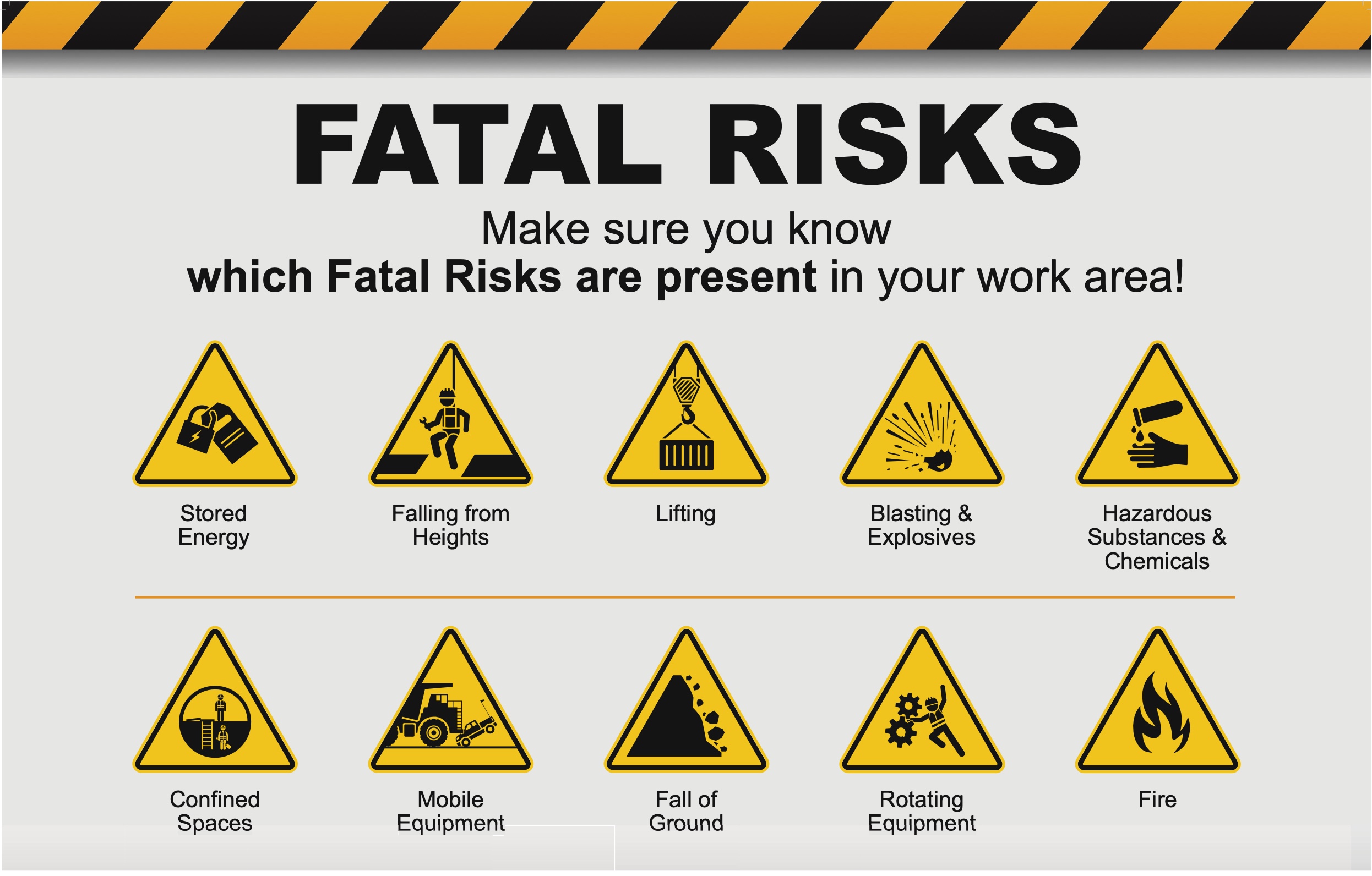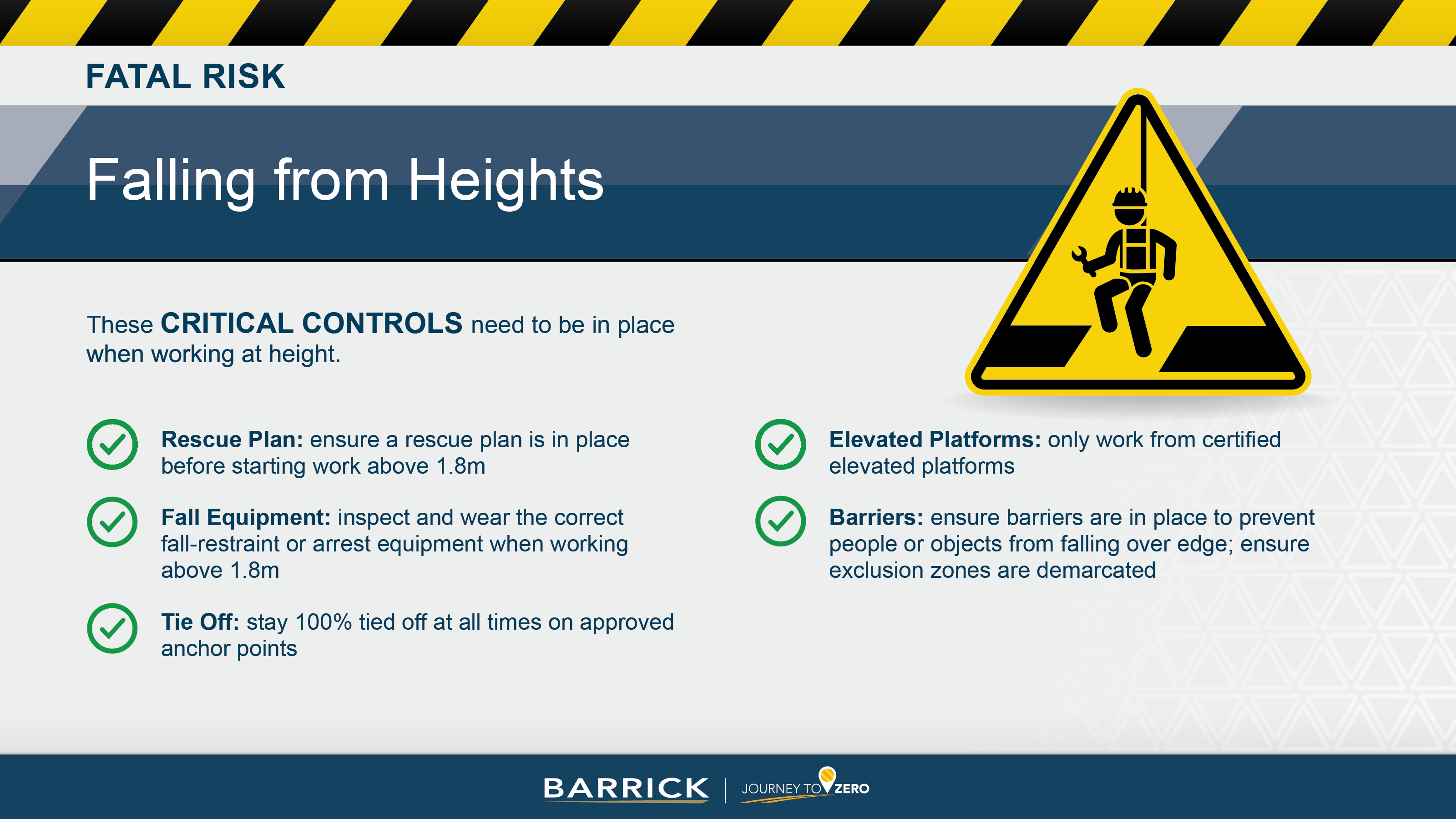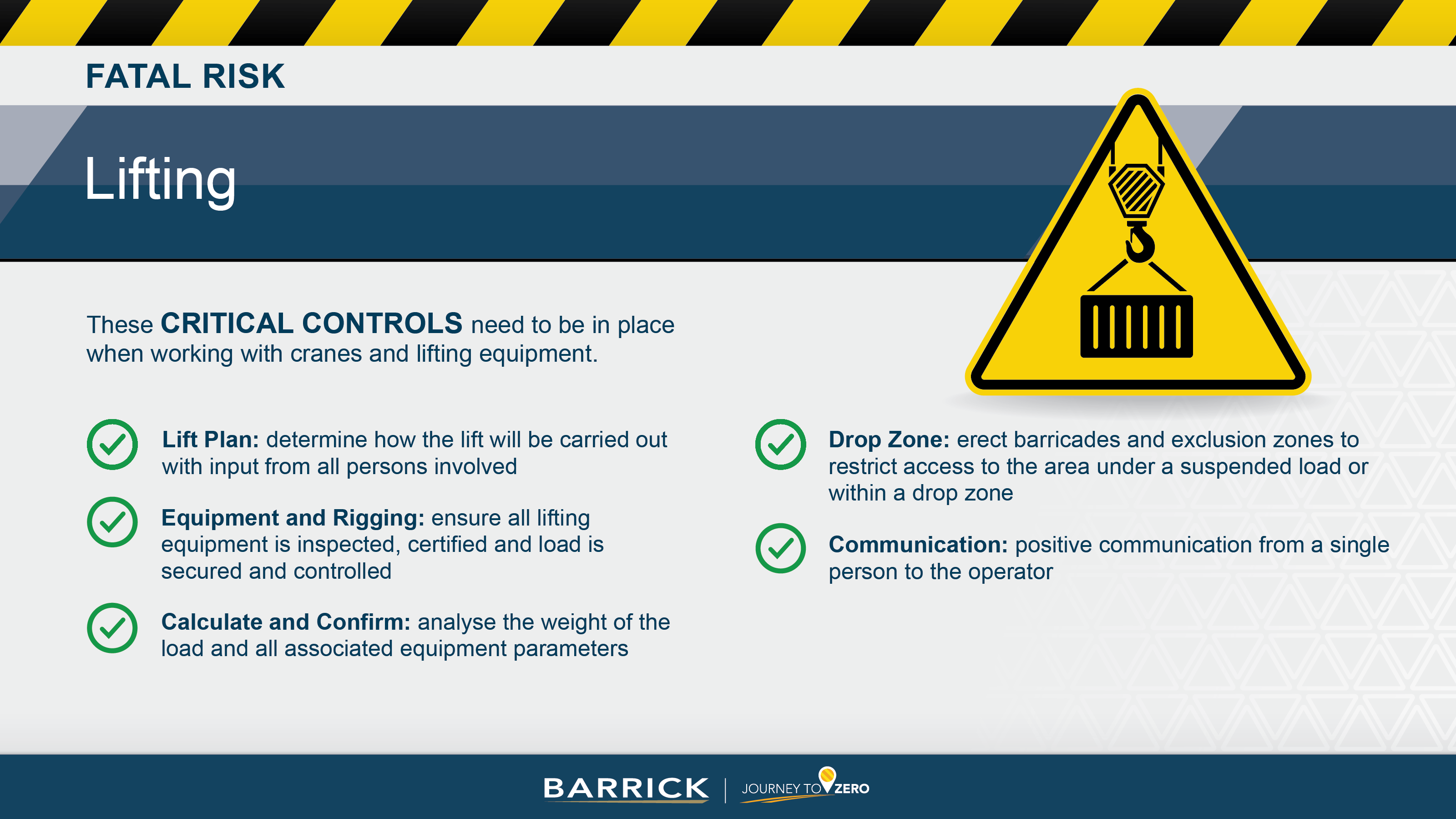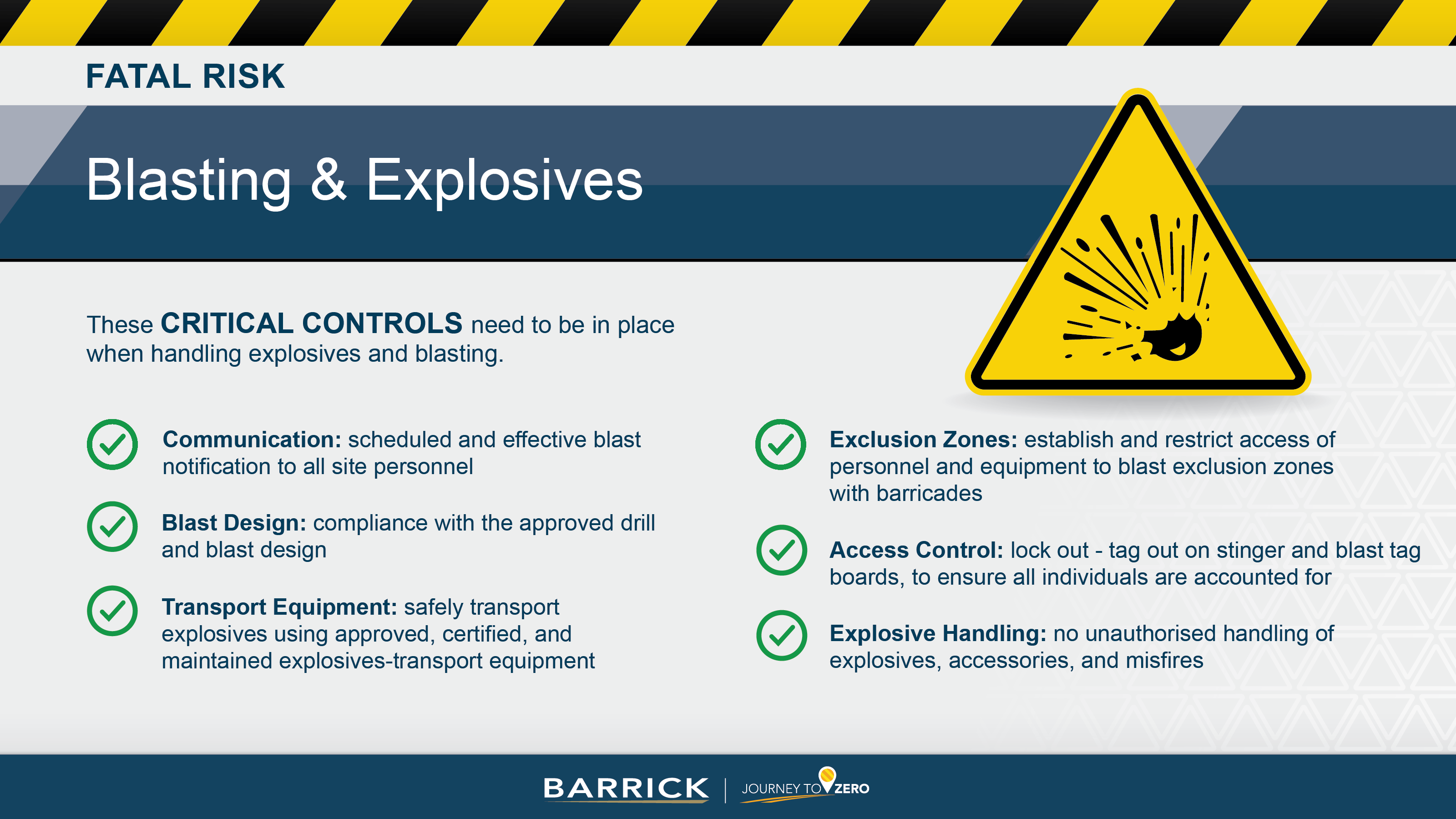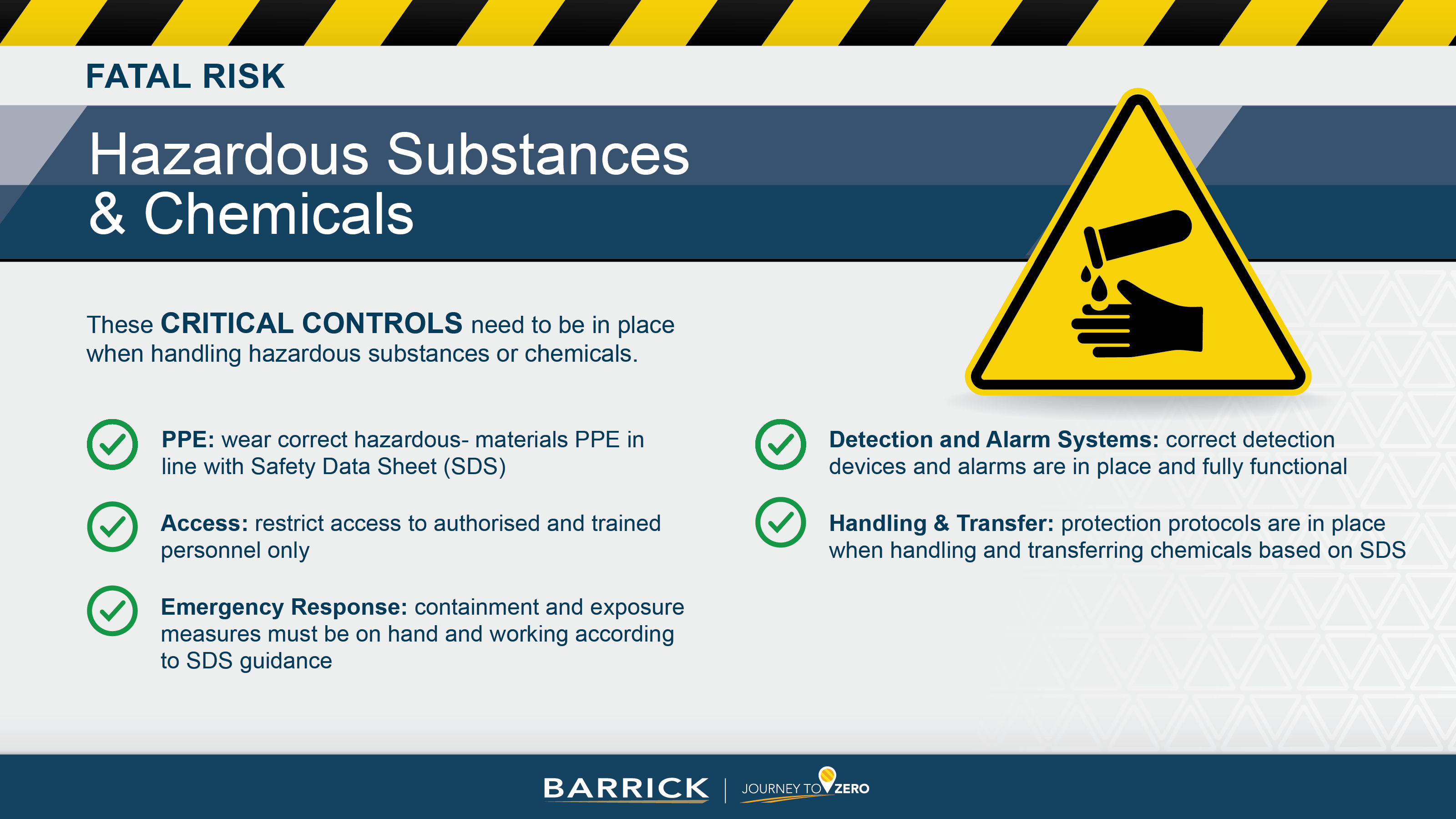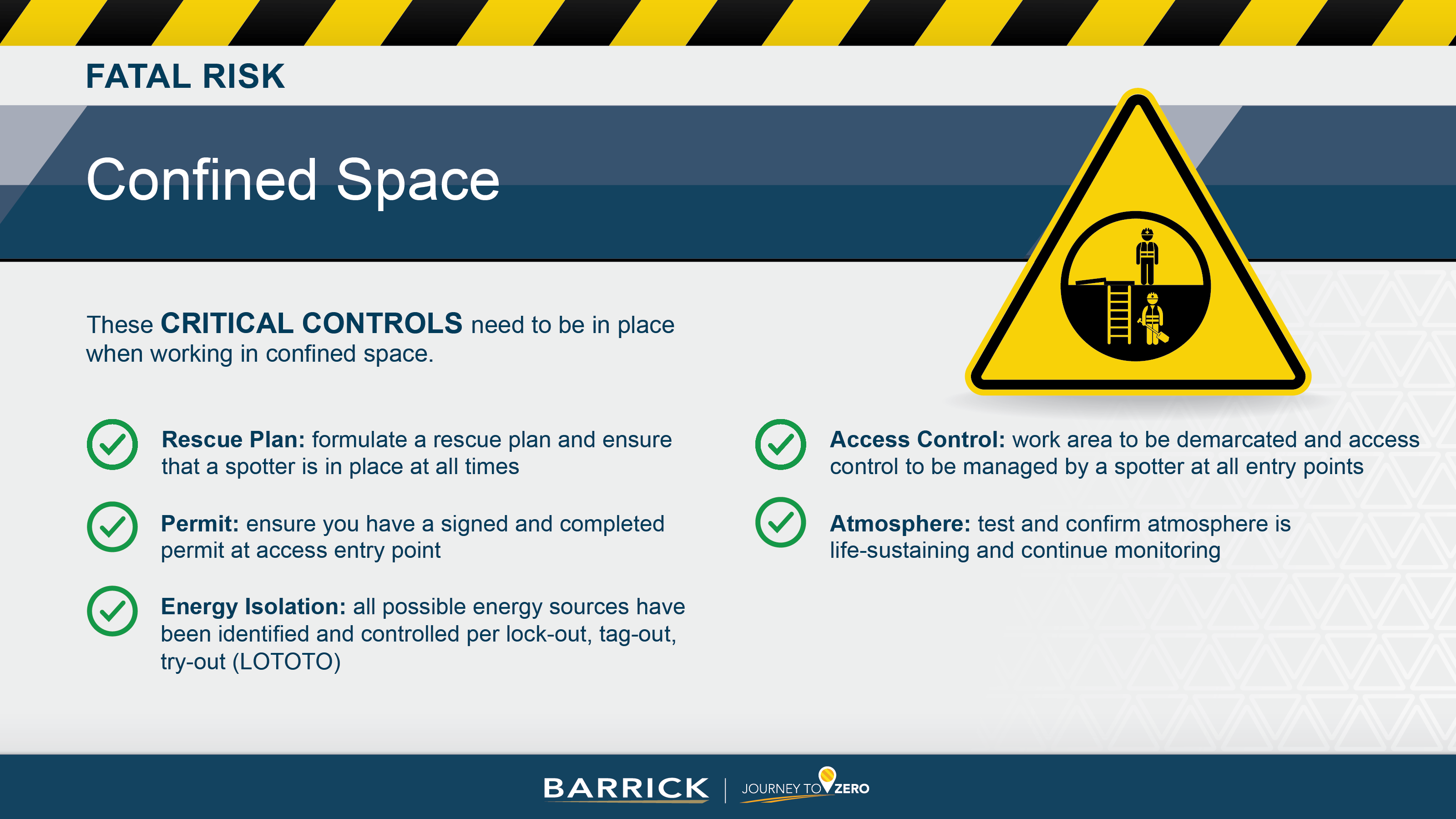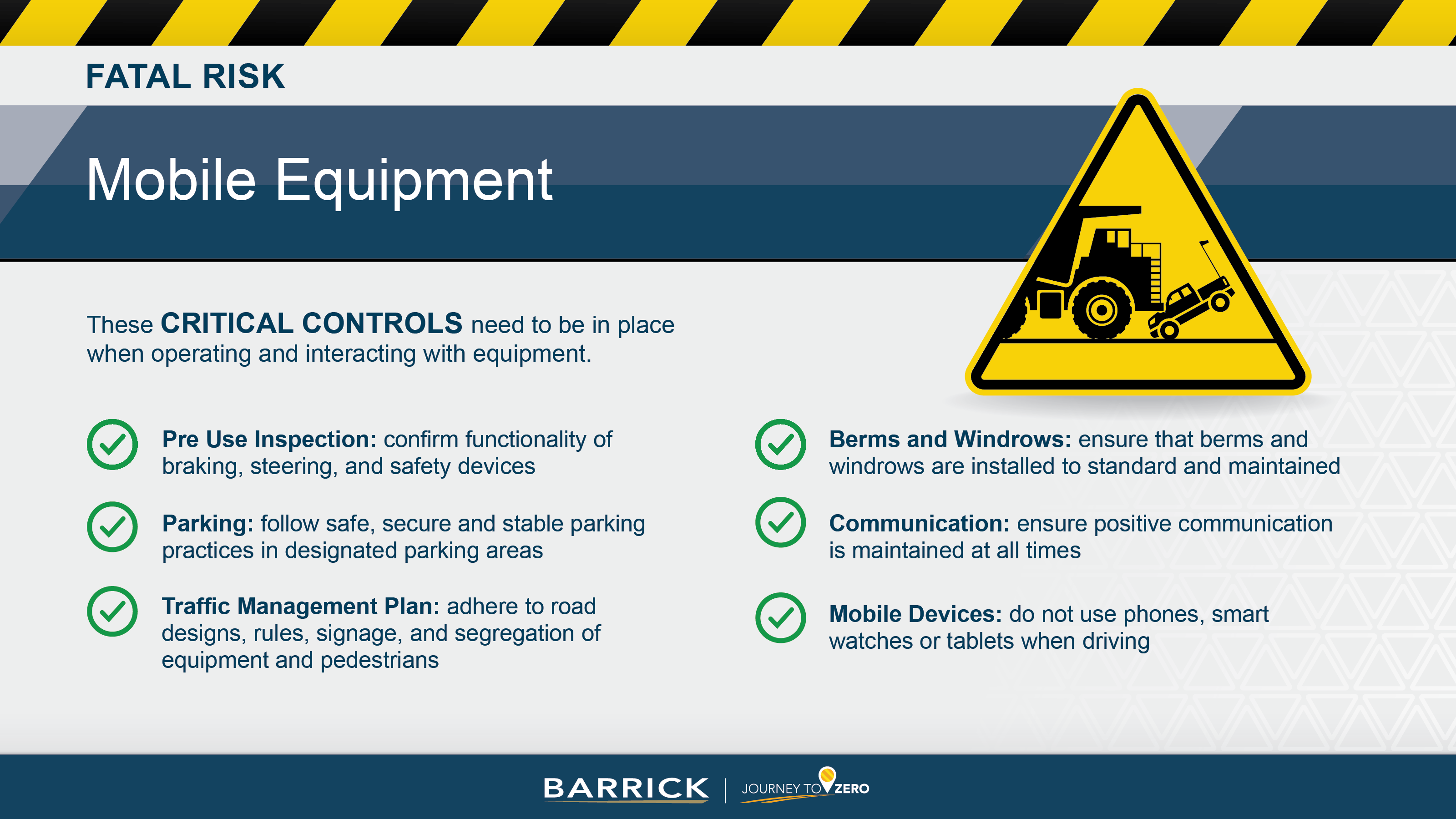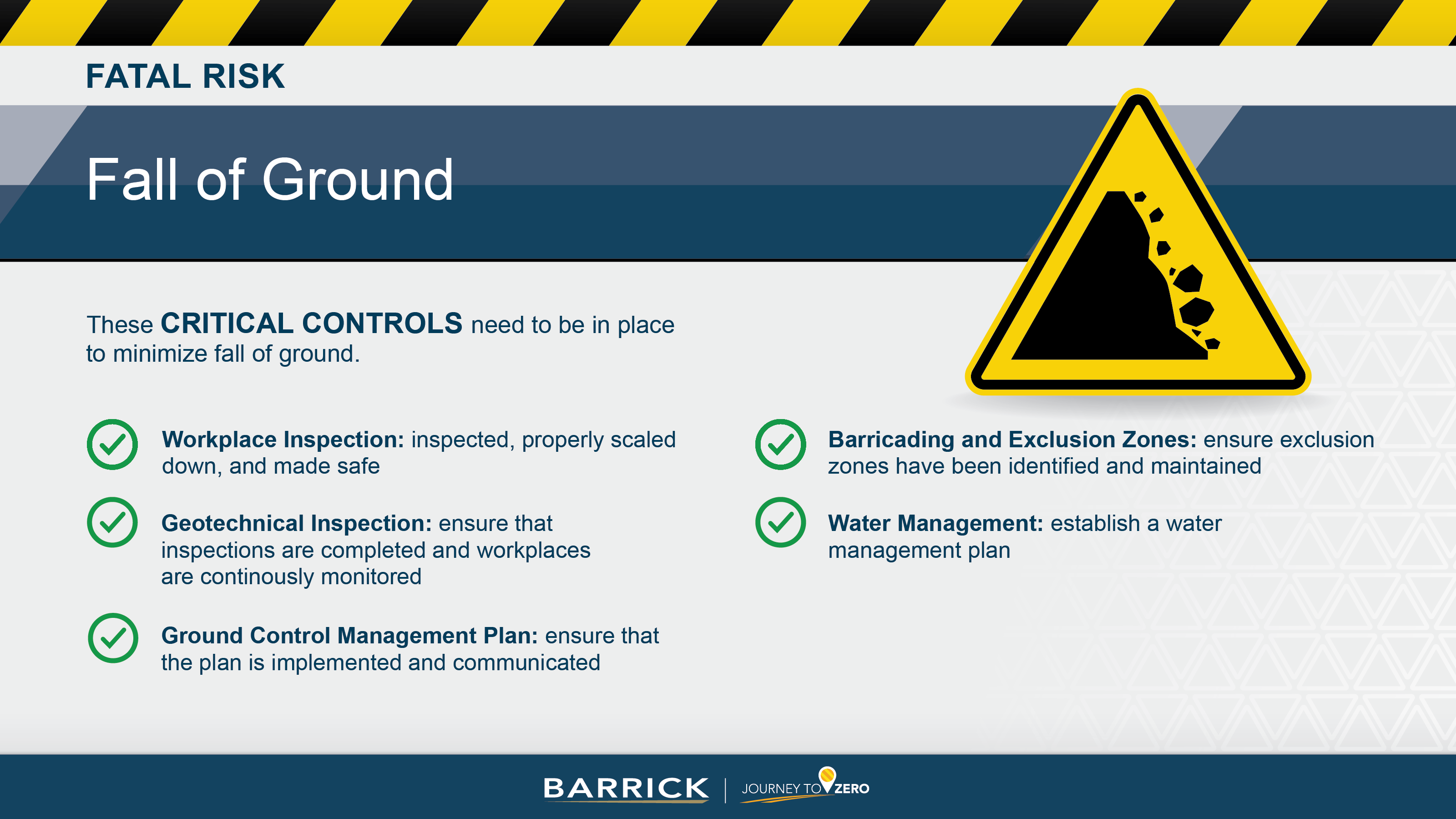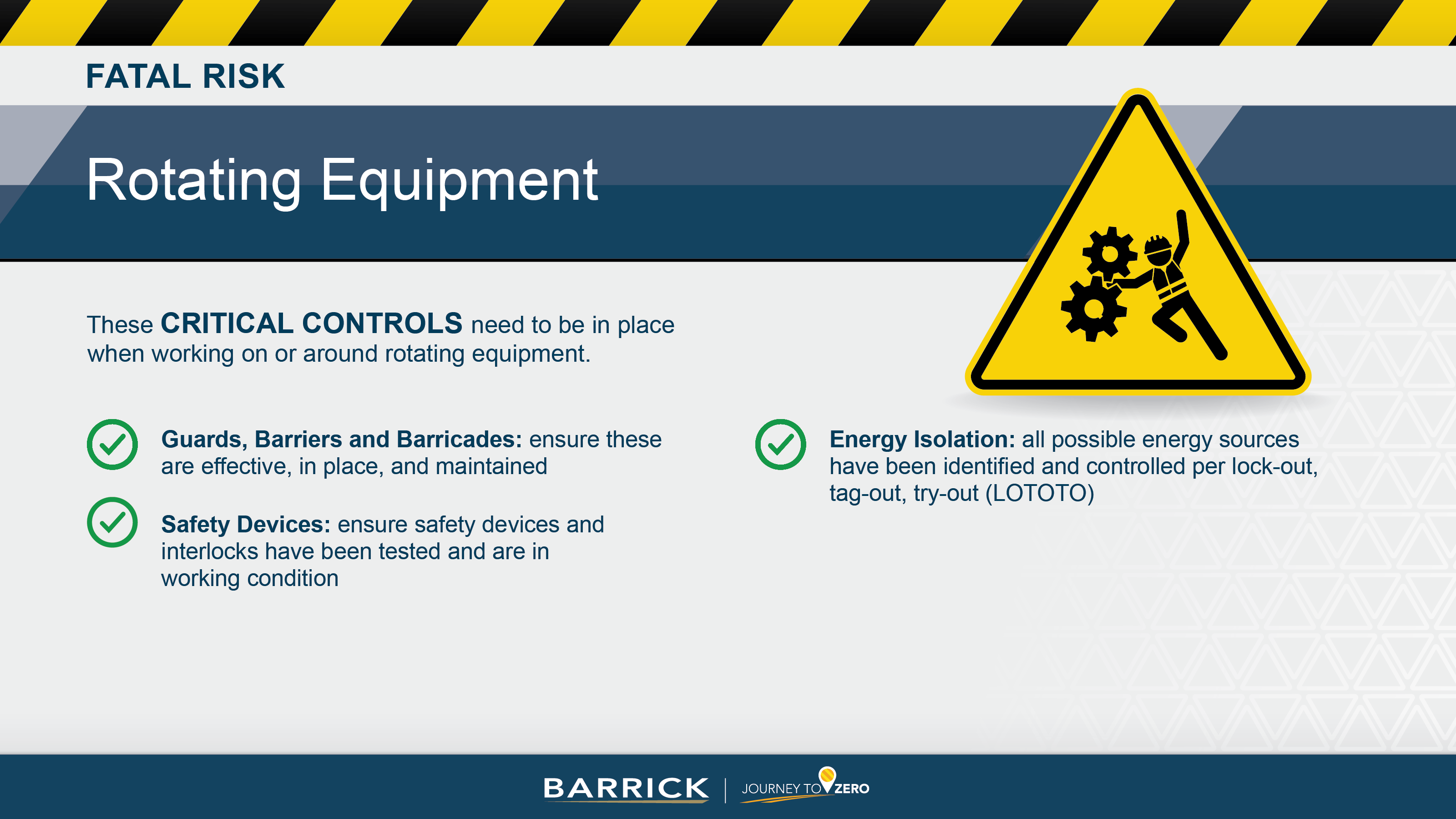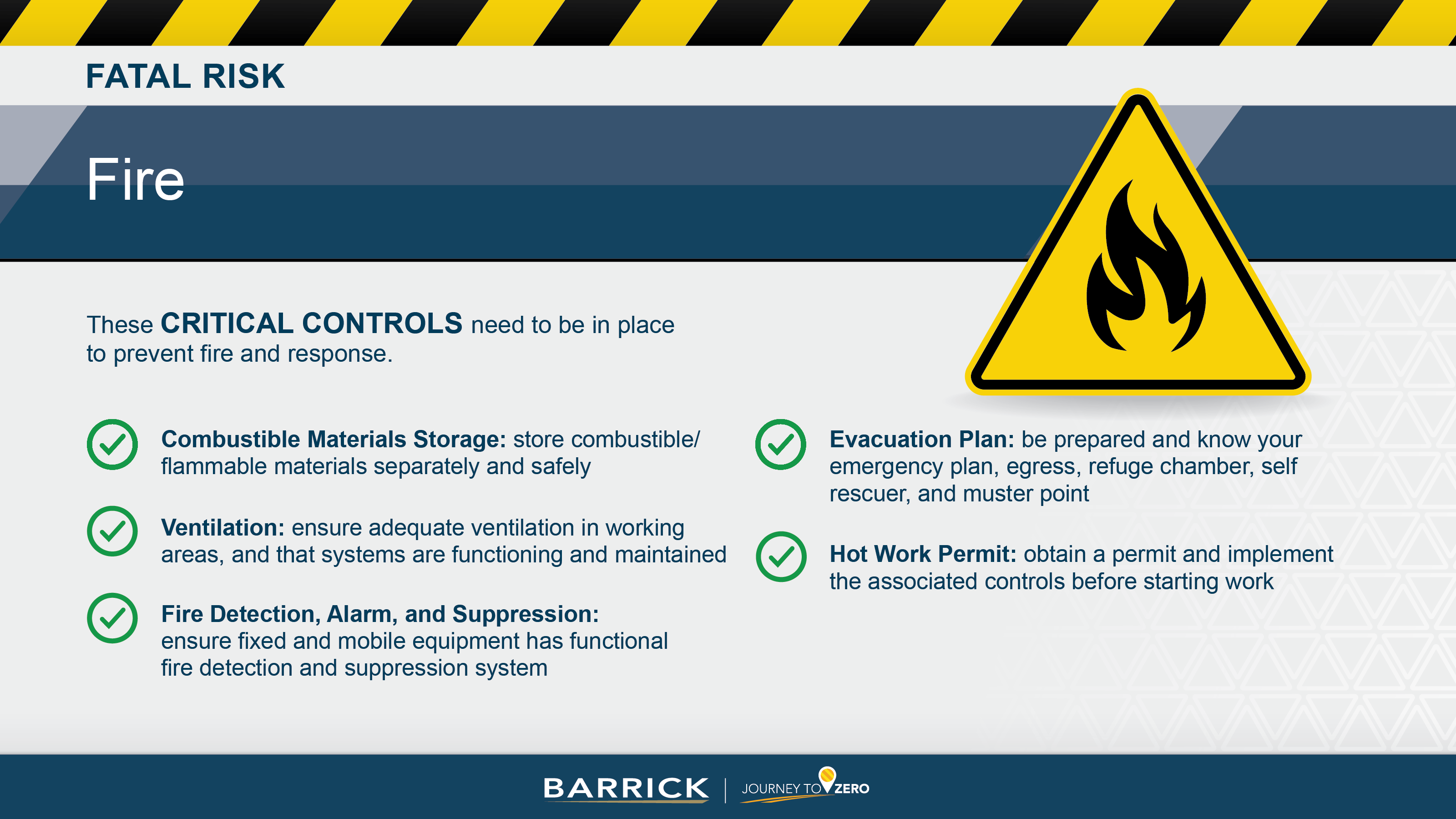Title Page
-
Prepared by:
-
Location:
-
Date:
-
Task/Activity:
-
Brief Description of Task/Activity
-
Document Number:
Fatal Risk Control
-
Make sure you know which Fatal Risks are present in your work area!
-
If any fatal risk controls are not effectively implemented or maintained the task/activity should be stopped immediately and the related risks needs to be re assessed by a competent person.
Stored Energy
-
These CRITICAL CONTROLS need to be in place to prevent exposure to stored energy.
-
Does the activity present stored energy risks.
-
De-energise: Identity sources of energy and ensure they are at zero-state
-
LOTOTO: Remember to always lock out-tag out-try out
-
Guards, Barriers and Barricades: Ensure they in position are effective
-
Lock Out Device: Use the appropriate lock-out device to isolate the energy source
-
Personal Lock and Tag: Have your own lock and tag, with unique key
Falling from heights
-
These CRITICAL CONTROLS need to be in place when working at height.
-
Does the activity present falling from height risks.
-
Rescue Plan: Ensure a rescue plan is in place before starting work above1.8M
-
Fall Equipment: Inspect and wear the correct fall-restraint or arrest equipment when working above 1.8M
-
Tie Off: Stay 100% tied off all times on approved anchor points
-
Elevated Platforms: Only work from certified elevated platforms
-
Barriers: Ensure barriers are in place to prevent people or objects from failing over edge, ensure exclusion zones are demarcated
Lifting
-
These CRITICAL CONTROLS need to be in place when working with cranes and lifting equipment.
-
Does the activity present lifting risks.
-
Lift Plan: Determine how the lift will be carried out with input from all persons involved
-
Equipment and Rigging: Ensure all lifting equipment is inspected, certified and load is secured and controlled
-
Calculate and Confirm: Analyse the weight of load and all associated equipment parameters
-
Drop Zone: Erect barricades and exclusion zone to restrict access to the area under a suspended load or within a drop zone
-
Communication: Positive communication from a single person to the operator
Blasting & Explosives
-
These CRITICAL CONTROLS needs to be in place when handling explosives & blasting
-
Does the activity present blasting or explosive risks.
-
Blast Designs: Compliance with the approved drill and blast designs
-
Transport Equipment: Safely transport explosives using approved, certified and maintained explosives transport equipment
-
Exclusion Zones: Establish and restrict access of personnel and equipment to blast exclusion zones with barricades
-
Access Control: Lock-out tag out on stinger and blasting tag boards to ensure all individuals are accounted for
-
Explosive Handling: No unauthorised handling of explosives, accessories and misfires
Hazardous Chemicals
-
These CRITICAL CONTROLS needs to be in place when handling Hazardous Chemicals
-
Does the activity present hazardous chemical risks.
-
PPE: Wear correct hazardous - materials PPE in line with Safety Data Sheet (SDS)
-
Access: Restrict access to authorised and trained personnel only.
-
Emergency Response: Containment and exposure measures must be on hand and working according to SDS guidance.
-
Detection and Alarm Systems: Correct detection devices and alarms are in place and fully functional.
-
Handling & Transfer: Protection protocols are in place when handling and transferring chemicals based on SDS.
Confined Space
-
These CRITICAL CONTROL needs to be in place when working in confined space.
-
Does the activity present confined space risks.
-
Rescue Plan: Formulate a rescue plan and ensure that a spotter is in place at all times
-
Permit: Ensure you have a signed and completed permit at access entry point
-
Energy Isolation: All possible energy sources have been identified and controlled per lock out, tag out, try-out(LOTOTO)
-
Access Control: Test and Confirm atmosphere is Life-sustaining and continue monitoring
Mobile Equipment
-
These CRITICAL CONTROLS need to be in place when operating and interacting with equipment.
-
Does the activity present mobile equipment risks.
-
Pre-use Inspection: Confirm functionality of brake, Steering and safety devices
-
Parking: Follow safe, secure and stable parking practices in designated parking areas
-
Traffic Management Plan: Adhere to road designs, rules, signage and segregation of equipment and pedestrians
-
Berms and Windrows: Ensure that berms and windrow are installed to standard and maintained
-
Communication: Ensure positives communication is maintained at all times
-
Mobile Devices: do not use phones, Smart Watches or tablets when driving
Fall of Ground
-
These CRITICAL CONTROLS needs to be in place to minimize fall of ground.
-
Does the activity present fall of ground risks.
-
Workplace Inspection: Inspected, Properly scaled down and made safe
-
Geotechnical Inspection: Ensure that Inspections are completed and workplaces are continually monitored
-
Ground Control Management: Ensure that plan is implemented and communicated
-
Barricading and Exclusion Zones: Ensure exclusion zones have been identified and maintained
-
Water Management: Establish a water management plan
Rotating Equipment
-
These CRITICAL CONTROLS need to be in place when working on or around rotating equipment.
-
Does the activity present rotating equipment risks.
-
Guards, Barriers and Barricades: Ensure these are effective in place and maintained
-
Safety Devices: Ensure safety devices and interlocks have been tested and are in working condition
-
Energy Isolation: All possible energy sources have been identified and controlled per lock out, tag out, try-out(LOTOTO)
Fire
-
These CRITICAL CONTROLS need to be in place to prevent fire and response.
-
Does the activity present fire and response risks.
-
Combustible Materials Storage: Store combustible/flammable materials separately
-
Ventilation: Ensure adequate ventilation in working areas, and that systems are functioning and maintained
-
Fire Detection, Alarm and Suppression:
-
Ensure fixed and mobile equipment has functional fire detection and suppression
-
Evacuation Plan:
-
Be prepared and know your emergency plan, egress, refuge, self rescuer and muster point
-
Hot Work Permit: Obtain a permit and implement the associated controls before starting work
-
Hazardous Substances & Chemicals
Sign off
-
Person Conducted Fatal Risk Critical Control Verification.






